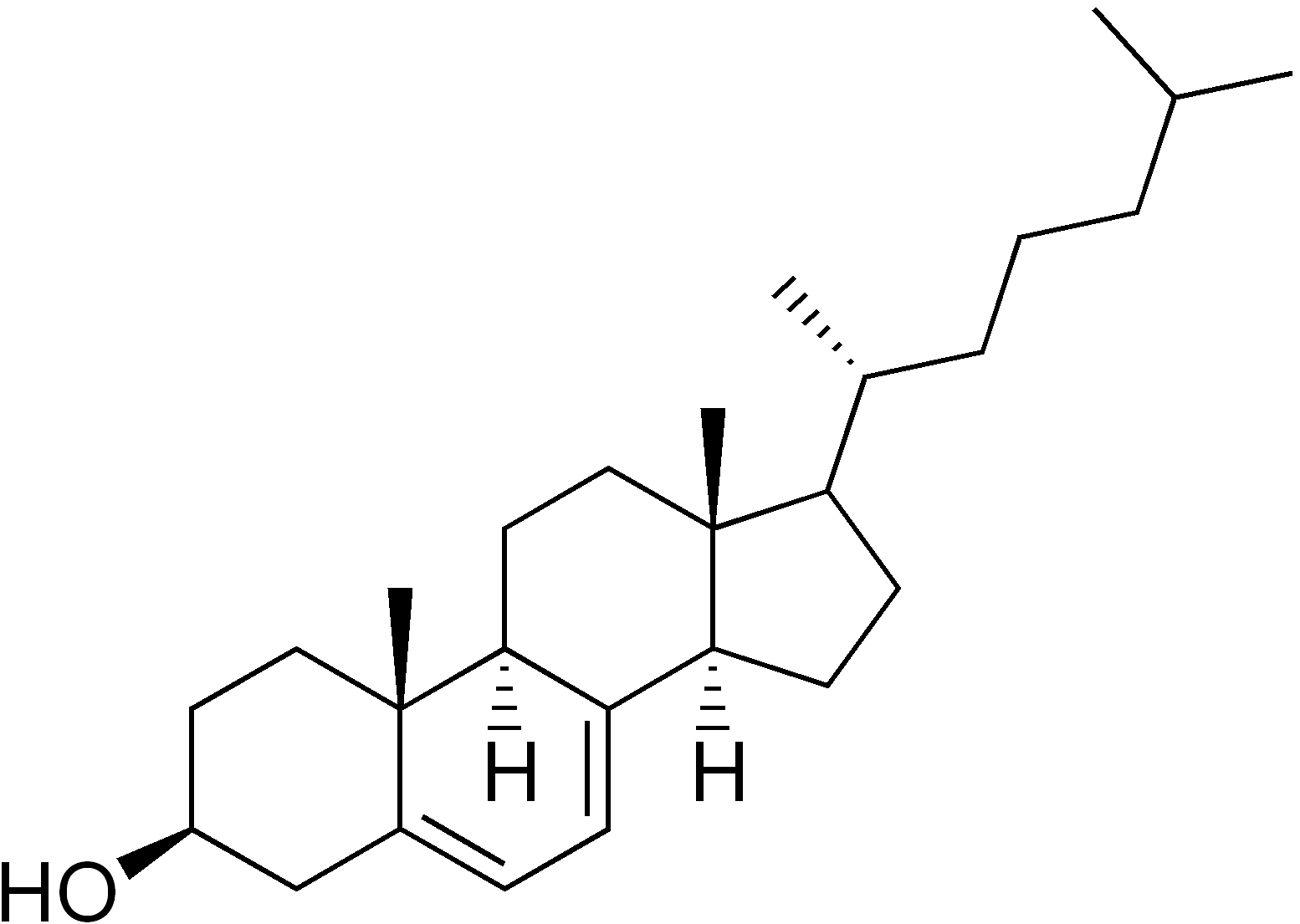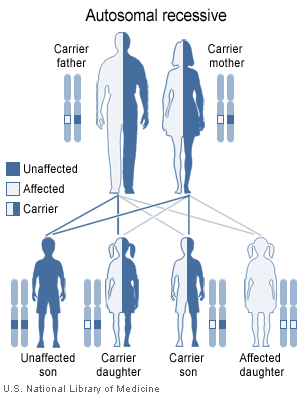Smith-Lemli-Opitz syndrome: Difference between revisions
No edit summary |
|||
| Line 14: | Line 14: | ||
}} | }} | ||
{{SI}} | {{SI}} | ||
{{SK}}: SLO Syndrome, RSH Syndrome, | {{SK}}: SLO Syndrome, RSH Syndrome, Rutledge Lethal Multiple Congenital Anomaly Syndrome, Polydactyly, Renal Hypoplasia and Unilobar Lung, | ||
Lethal Acrodysgenital Syndrome. | |||
==Overview== | ==Overview== | ||
Revision as of 16:32, 13 September 2013
| Smith-Lemli-Opitz syndrome | |
 | |
|---|---|
| 7-Dehydrocholesterol | |
| ICD-10 | Q87.1 |
| ICD-9 | 759.89 |
| OMIM | 270400 |
| DiseasesDB | 12223 |
| eMedicine | ped/2117 |
| MeSH | D019082 |
Synonyms and keywords:: SLO Syndrome, RSH Syndrome, Rutledge Lethal Multiple Congenital Anomaly Syndrome, Polydactyly, Renal Hypoplasia and Unilobar Lung, Lethal Acrodysgenital Syndrome.
Overview
Smith-Lemli-Opitz syndrome (also known as SLOS, or 7-dehydrocholesterol reductase deficiency) is a metabolic and developmental disorder that occurs due to deficiency of 7-dehydrocholesterol reductase. This is an enzyme required for formation of cholesterol from 7-dehydrocholesterol.
| Cholesterol | |||||||||||||||||||||||||||||||||||||
| DHCR7 | |||||||||||||||||||||||||||||||||||||
| 7-Dehydrocholesterol | |||||||||||||||||||||||||||||||||||||
| UVB radiation | |||||||||||||||||||||||||||||||||||||
| Pre-vitamin D3 | |||||||||||||||||||||||||||||||||||||
Historical perspectives
In 1964, David Smith, Luc Lemli and John Opitz described a malformation syndrome in 3 patients, who had common facial dysmorphic features, developmental delay, microcephaly and urogenital abnormalities.[1] More descriptive profile for SLO was described in 1969, which was termed as RSH syndrome after the first letters of names of original patients. Description of more cases of SLO syndrome expanded its clinical presentation spectrum over the years. Few years later, more lethal phenotype of SLO syndrome was discovered which was termed as type II SLO which has significantly increased mortality in infancy.[2] Association of defective cholesterol synthesis and SLO syndrome was described for the first time in 1993.[3]
Genetics

Smith-Lemli-Opitz syndrome affects an estimated 1 in 20,000 to 40,000 births. Its incidence is equal in both males and females. It is most common in Caucasians of European ancestry, but less common among African and Asian populations. 40 new cases per year is the reported incidence in united States.[4]
This disorder is inherited in an autosomal recessive pattern. Missense mutations are the most common mutation accounting for SLOS.
Smith-Lemli-Opitz syndrome is caused by mutations in gene DHCR7 which codes for 7-dehydrocholesterol enzyme. DHCR7 gene has been localised to chromosome 11q23.[5] Mutations in the DHCR7 gene reduce or eliminate the activity of 7-dehydrocholesterol reductase, preventing cells from producing enough cholesterol.
Classification
- Type 1: less severe, with partial enzyme block
- Type II: Lethal, increased infant mortality, complete enzyme block
Presentation
Clinical features
Cases of SLOS can vary widely in their clinical presentation. It is characterized by multiple congenital anomalies, but not all features are present in all affected individuals. The most commonly observed features include:
- Dysmorphic facial features include: micrognathia, thick upper alveolar ridges,V-shaped upper lip, short nose, microglossia, high arched palate
- Smaller head size (Microcephaly)
- Webbed neck
- Widely spaced nipples
- Mental retardation, learning disabilities and behaviour problems
- Grwoth restriction
- Syndactyly (most commonly of the second and third toes)
- Polydactyly
- Urogenital abnormalities including hypospadiasis, ambiguous genitilia.
- Cleft Palate
Common internal findings include:
- Congenital heart defects
- Renal hypoplasia
- Malformations of gastrointestinal tracts
- Type II SLOS also presents Hirschsprung disease, unilobar lung, pancreatic hyperplasia.
Biochemical Features
Defective 7-dehydrocholesterol reductase leads to decreased cholesterol and increased levels of cholesterol precursors like 7-dehydrocholesterol. Low cholesterol levels result in decreased adrenal functions and decreased bile acid production.
Pathology
DHCR7 enzyme is responsible for the final step in the production of cholesterol. How cholesterol causes dysmorphogenesis, has not been completely established. Cholesterol deficiency is detrimental for fetal development as it is an essential component for normal embryogenesis. Cholesterol is also a structural component of cell membranes and the protective substance covering nerve cells (myelin). Additionally, cholesterol plays an important role in the production of certain hormones and digestive acids. Toxic effects of cholesterol precursors accumulation in blood and other tissues in addition to cholesterol deficiency also leads to defective development. As cholesterol plays an important role in neuronal differentiation and synapses formation, its deficiency results in mental retardation and learning disabilities.[6] Additionally, disruption of signalling pathways involving sonic hedgehog protein is currently a prime theory for defective congenital development. [7]
Associated conditions
A 2006 study of 14 children with Smith-Lemli-Opitz syndrome reported that most children with SLOS have an autism spectrum disorder. SLOS appears to have the most consistent relationship with autism of any single-gene disorder.[8]
Prenatal Diagnosis and Screening
Severe cases of intra uterine growth restriction without a defined cause and pregnancies with a family history of SLOS should be screened prenatally for this syndrome. A 1995 study done retrospectively demonstrated that increased level of 7- dehydrocholestrol in amniotic fluid during second trimester can be used as a very effective screening test for SLOS. Increased ratio of 7-dehydrocholesterol/ cholesterol in amniotic fluid and chorionic villus samples is highly suggestive of SLOS. Low levels of unconjugated estriol E3 in maternal serum can also be used as a non-invasive screening procedure.[9]
Diagnosis
Increased 7-dehydrocholesterol and low cholesterol levels in serum are generally used to diagnose SLOS in addtion to presence of family histroy and clinical symptoms. However there are cases with normal level of biochemical markers, to diagnose these atypical cases, 7-dehydrocholesterol levels of cultured skin fibroblasts can be measured. It is increased in fibroblasts of patients with SLOS.[10]
Treatment
Exogenous cholesterol supplementation is currently used to improve clinical symptoms. Increasing cholesterol levels in body helps to restore adrenal insufficiency symptoms and also to increase level of bile acids. HMG-CoA reductase inhibitors (statins) have been suggested for SLOS, however, their definite role in SLOS has not been established. Rationale behind using statins is to decrease the formation of toxic cholesterol precursors. [11]
Notable cases
On July 24th, 2007 a jury awarded a Florida couple, Daniel and Amara Estrada, whose sons are afflicted with Smith-Lemli-Opitz syndrome, 21 million dollars in damages. The Estradas claimed that Dr. Boris Kousseff failed to diagnose their first son's genetic disorder, leading to them having another son with the disorder.[12]
References
- ↑ SMITH DW, LEMLI L, OPITZ JM (1964). "A NEWLY RECOGNIZED SYNDROME OF MULTIPLE CONGENITAL ANOMALIES". J Pediatr. 64: 210–7. PMID 14119520.
- ↑ Curry CJ, Carey JC, Holland JS, Chopra D, Fineman R, Golabi M; et al. (1987). "Smith-Lemli-Opitz syndrome-type II: multiple congenital anomalies with male pseudohermaphroditism and frequent early lethality". Am J Med Genet. 26 (1): 45–57. doi:10.1002/ajmg.1320260110. PMID 3812577.
- ↑ Irons M, Elias ER, Salen G, Tint GS, Batta AK (1993). "Defective cholesterol biosynthesis in Smith-Lemli-Opitz syndrome". Lancet. 341 (8857): 1414. PMID 7684480.
- ↑ Kelley RI (1998). "RSH/Smith-Lemli-Opitz syndrome: mutations and metabolic morphogenesis". Am J Hum Genet. 63 (2): 322–6. doi:10.1086/301987. PMC 1377327. PMID 9683618.
- ↑ Moebius FF, Fitzky BU, Lee JN, Paik YK, Glossmann H (1998). "Molecular cloning and expression of the human delta7-sterol reductase". Proc Natl Acad Sci U S A. 95 (4): 1899–902. PMC 19210. PMID 9465114.
- ↑ Goritz C, Mauch DH, Pfrieger FW (2005). "Multiple mechanisms mediate cholesterol-induced synaptogenesis in a CNS neuron". Mol Cell Neurosci. 29 (2): 190–201. doi:10.1016/j.mcn.2005.02.006. PMID 15911344.
- ↑ Cooper MK, Porter JA, Young KE, Beachy PA (1998). "Teratogen-mediated inhibition of target tissue response to Shh signaling". Science. 280 (5369): 1603–7. PMID 9616123.
- ↑ Sikora DM, Pettit-Kekel K, Penfield J, Merkens LS, Steiner RD (2006). "The near universal presence of autism spectrum disorders in children with Smith-Lemli-Opitz syndrome". Am J Med Genet a. 140 (14): 1511–8. doi:10.1002/ajmg.a.31294. PMID 16761297.
- ↑ Schoen E, Norem C, O'Keefe J, Krieger R, Walton D, To TT (2003). "Maternal serum unconjugated estriol as a predictor for Smith-Lemli-Opitz syndrome and other fetal conditions". Obstet Gynecol. 102 (1): 167–72. PMID 12850625.
- ↑ Honda A, Tint GS, Salen G, Kelley RI, Honda M, Batta AK; et al. (1997). "Sterol concentrations in cultured Smith-Lemli-Opitz syndrome skin fibroblasts: diagnosis of a biochemically atypical case of the syndrome". Am J Med Genet. 68 (3): 282–7. PMID 9024560.
- ↑ Jira PE, Wevers RA, de Jong J, Rubio-Gozalbo E, Janssen-Zijlstra FS, van Heyst AF; et al. (2000). "Simvastatin. A new therapeutic approach for Smith-Lemli-Opitz syndrome". J Lipid Res. 41 (8): 1339–46. PMID 10946022.
- ↑ "LOCAL - - Gainesville.com". Retrieved 2007-09-01.
See also
This article incorporates public domain material from the United States National Library of Medicine document "Genetics Home Reference".
Template:Phakomatoses and other congenital malformations not elsewhere classified
Template:Lipidemias
de:Smith-Lemli-Opitz-Syndrom nl:Syndroom van Smith-Lemli-Opitz